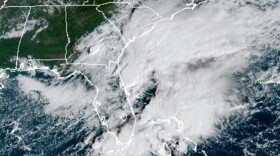A report on sea level rise in North Carolina points to dozens of coastal communities that face chronic flooding over the next century. The analysis from the Union of Concerned Scientists says about a dozen towns and cities will start to face some level of chronic inundation within the next 20 years. The report defines chronic inundation as flooding events that cover at least 10 percent of the community, and happen at least twice a month.
Erika Spanger-Siegfried, one of the study's lead authors, said the report raises questions about how coastal states should prepare for sea level rise.
“Which places do we continue to support? Which places do we decide we can no longer make state and federal investments here?” she said. “It's going to be an enormous challenge. We're really at the front end of an adaptation century.”
The report uses sea level projections from the National Climate Assessment. It says up to 60 communities across the state could be chronically inundated by the year 2100.
Towns like Swan Quarter will get at least moderate flooding twice a month within the next 30 years, according to the analysis.
The most vulnerable communities are in low-lying rural areas like the mainland side of the Pamlico Sound, according to Spanger-Siegfried.
“And that's really where we see the chronically inundated communities begin to expand over the course of the century,” she said. “Much of that region, including the Outer Banks, will be chronically inundated later this century.”
By the year 2045, as many as 25 towns and cities will have some kind of flooding event at least twice a month.
“The places that see chronic inundation in the coming couple of decades in North Carolina tend to be places with small populations, places with large areas of farmland, and presumably places that don't have extensive defensive measures in place,” Spanger-Siegfried said.









